A COURSE IN
RUSSIAN
HISTORY |
The Time of
Catherine the Great
First published 1997 by M.E. Sharpe
Published 2015 by Routledge
2 Park Square, Milton Park, Abingdon, Oxon OX14 4RN
711 Third Avenue, New York, NY 10017
Routledge is an imprint of the Taylor & Francis Group, an informa business
Copyright 1997 Taylor & Francis. All rights reserved.
No part of this book may be reprinted or reproduced or utilised in any form or by any electronic, mechanical, or other means, now known or hereafter invented, including photocopying and recording, or in any information storage or retrieval system, without permission in writing from the publishers.
Notices
No responsibility is assumed by the publisher for any injury and/or damage to persons or property as a matter of products liability, negligence or otherwise, or from any use of operation of any methods, products, instructions or ideas contained in the material herein.
Practitioners and researchers must always rely on their own experience and knowledge in evaluating and using any information, methods, compounds, or experiments described herein. In using such information or methods they should be mindful of their own safety and the safety of others, including parties for whom they have a professional responsibility.
Product or corporate names may be trademarks or registered trademarks, and are used only for identification and explanation without intent to infringe.
Library of Congress Cataloging-in-Publication Data
Kliuchevskii, V. O. (Vasili Osipovich), 18411911.
[Kurs russkoi istorii. Chast 45. English]
A course in Russian historythe time of Catherine the Great / by
Vasily O. Kliuchevsky: translated and edited by Marshall S. Shatz.
p. cm.
Includes bibliographical references and index.
ISBN 1-56324-526-4 (alk. paper).
ISBN 1-56324-527-2 (pbk.: alk. paper)
1. RussiaHistoryCatherine II, 17621796.
I. Shatz, Marshall. II.Title.
DK170.K4513 1997
947.06dc21 97-8080
CIP
ISBN: 978-1-563-24527-5 (pbk)
ISBN: 978-1-563-24526-8 (hbk)

Contents

.
T his volume is a translation of Lectures 7381 of Kliuchevskys Course in Russian History, comprising the last two lectures of Part 4 and the first seven lectures of Part 5. The Russian text used for this translation is Kurs russkoi istorii, edited by V. A. Aleksandrov and A.A. Zimin, in the fourth and fifth volumes of V.O. Kliuchevskii, Sochineniia v vosmi tomakh (Moscow: Gos. Izdat. Politicheskoi Literatury/Izdat. Sotsialno-ekonomicheskoi Literatury, 195659).
The illustrations are from Volume 12 of Sochineniia Imperatritsy Ekateriny II, edited by A.N. Pypin (St. Petersburg: Imperial Academy of Sciences, 1907).
The transliteration system employed is a simplified version of the Library of Congress system, but with some additional changes to facilitate pronunciation.
Dates are given according to the Julian calendar in use in Russia both in Catherines and in Kliuchevskys time. It was eleven days behind the Western calendar in the eighteenth century and twelve days behind in the nineteenth.
I have taken some minor liberties with the text, adding chapter titles, dividing excessively long paragraphs, and rendering names according to American usage (first name and last name), with patronymics given in the Glossary of Names. All footnotes are those of the translator.
The preparation of this volume was made possible in part by a grant from the National Endowment for the Humanities, an independent federal agency. I am grateful to the Endowment for its generous support. I also wish to thank Professors Marc Raeff and John Alexander, who kindly read the Introduction and shared with me their expert knowledge of the reign of Catherine the Great.
Vasily Kliuchevsky and
Catherine the Great
A mong the outstanding works of literature generated by the burgeoning culture of imperial Russia in the late nineteenth and early twentieth centuries was a historical work, Vasily Kliuchevskys A Course in Russian History. It may seem odd to speak of a work of historyand in five volumes, no lessin the same breath as the great novels, stories, and plays that arose alongside it, but it is not inappropriate. In its cultural significance for Russia and even in its artistic qualities, Kliuchevskys Course is worthy of comparison with its fictional contemporaries. It constitutes a grand synthesis of ten centuries of Russian history, from the rise of the Kievan state in the ninth century to the emancipation of the serfs in 1861. More than any other single work, for much of the twentieth century Kliuchevskys Course has shaped the conception of Russias history in the minds of educated Russians and even, to a considerable degree, of non-Russians.
From its inception, the impact of the Course grew in ever widening circles, like a stone cast into a pond. At first its influence was confined to the students at Moscow University, where Kliuchevsky taught for over thirty years. Even there, it reached well beyond Kliuchevskys own lecture hall (which was the largest at the university). Given the scarcity of printed textbooks, professors lectures were frequently transcribed by students and disseminated in lithographed form. Sometimes the lithographed versions were authorized and corrected by the professor, sometimes they were unauthorized. Numerous lithographed editions
Kliuchevskys impact on Russian historical scholarship continued unabated even after his death. As the occupant of the chair in Russian history at Moscow University, he contributed to the formation of much of the next generation of Russian historians. Some of them helped build the historical profession in the Soviet Union after 1917, while others, in emigration, became influential interpreters of Russia to the West. Meanwhile, the Course was taking on a life of its own. Unlike many other products of prerevolutionary Russian culture and scholarship, which were passed over in silence or, at best, led a shadowy existence in the Soviet years, Kliuchevskys Course enjoyed virtually official recognition, despite its suspect status as an artifact of non-Marxist bourgeois historiography. It was first reprinted in 1921 and then a second time, astonishingly, in 1937, at the height of the Stalinist terror. In the late 1950s it was reprinted yet again, this time in a meticulously edited and annotated eight-volume collection of Kliuchevskys works. This edition of the Course included a revised and enlarged version of the fifth volume (containing chapters
At a time when previous ideological certainties have melted away, Kliuchevskys Russia provides an attractive alternative for Russians seeking a new understanding of their past and a new sense of national identity. Well over a century since it first began to take shape, the astonishing career of Kliuchevskys Course in Russian History shows no sign of coming to an end.
At first glance, Kliuchevsky would seem to have been a most unpromising candidate for such an enduring role in his countrys intellectual history. He was born in 1841 in the village of Voskresenskoe, in Penza Gubernia, several hundred miles southeast of Moscow. Not only his birthplace but his social origins placed him far from the centers of Russian cultural life. He was born into the family of an Orthodox parish priest, a milieu steeped in native tradition and relatively untouched by European intellectual influences. (It has often been noted that despiteor possibly because ofthis background, the church, and religious life in general, plays a minor role in the
Next page
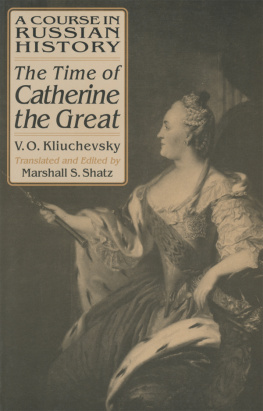



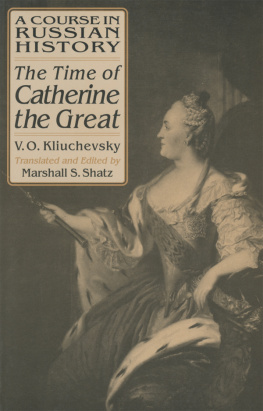
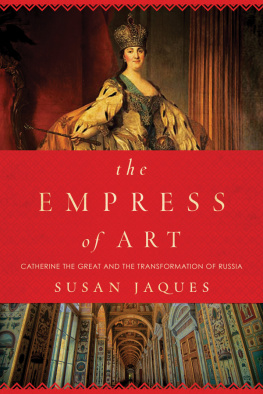
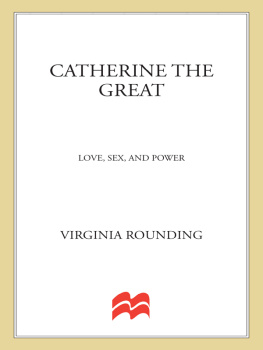

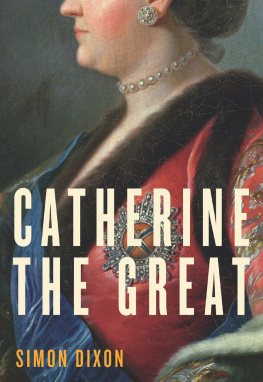
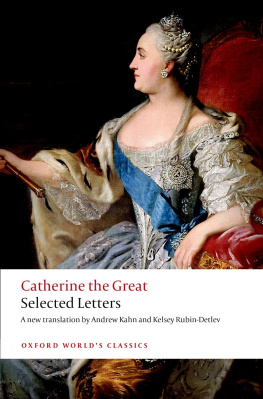
 Contents
Contents 